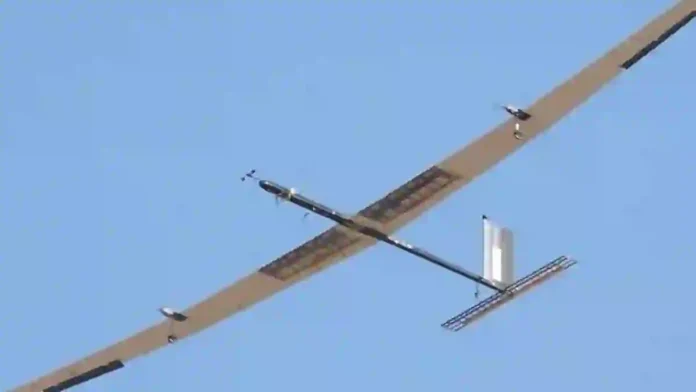Sources – Janes
India’s Council of Scientific and Industrial Research – National Aerospace Laboratories (CSIR-NAL) has carried out a series of flight tests on a subscale model of its high-altitude pseudo satellite (HAPS) platform reported Janes.
The tests were conducted at the Defence Research and Development Organisation’s (DRDO’s) Aeronautical Test Range (ATR) at Challakere, Karnataka, from 23 January to 2 February. During the tests, the subscale model, which has a wingspan of 12 m and a maximum take-off weight of 22 kg, conducted about 22 sorties and accumulated close to 37 flight hours.
Speaking to Janes, L Venkatakrishnan, NAL’s chief scientist and high-altitude platform programme director, said, “The aircraft met or exceeded all the performance metrics set out for it including a flight endurance of more than 8 hours 30 minutes, reaching an altitude of almost 3 km above mean sea level.” Venkatakrishnan added that metrics including climb rate, maximum bank angle, turn radius, and one engine inoperative were also assessed in the flight tests.
Read- Russia Refutes Delivery Disruption Claims Of S400 Systems To India
In undertaking the tests, NAL has achieved a deliverable under its HAPS project to “demonstrate a Reynolds number [which indicates the ratio of inertial forces to viscous forces] equivalent flight at an altitude of 3 km”, Venkatakrishnan said.
The tested HAPS model was equipped with the payloads and flight systems required on a full-scale platform. It was also fitted with a pair of cameras (forward looking and on the tail) to observe in-flight performance. Fitted with high-performance solar photovoltaic cells, a battery system – and a payload of 1 kg – the subscale model can reach a 24-hour endurance flight, making it useful for low-altitude missions, Venkatakrishnan said.




